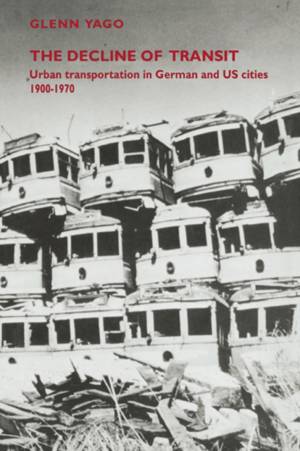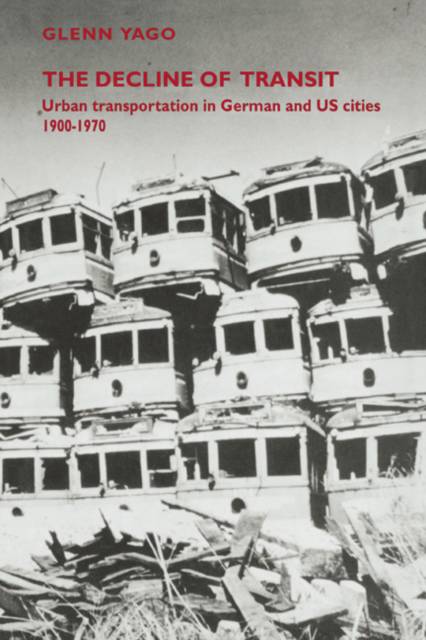
- Afhalen na 1 uur in een winkel met voorraad
- Gratis thuislevering in België vanaf € 30
- Ruim aanbod met 7 miljoen producten
- Afhalen na 1 uur in een winkel met voorraad
- Gratis thuislevering in België vanaf € 30
- Ruim aanbod met 7 miljoen producten
Zoeken
The Decline of Transit
Urban Transportation in German and U.S. Cities, 1900 1970
Glenn Yago
Paperback | Engels
€ 60,95
+ 121 punten
Omschrijving
Automobiles dominate transportation today in most American cities. After World War II, urban planners embraced highway transportation as the solution to urban congestion, while mass transit was shunned as outmoded and appropriate only for older, densely populated cities. Yet the prolonged energy crisis, beginning in 1973, shattered most previously held attitudes about the role of mass transit, and it was now promoted as central to energy efficiency and rational land use. If mass transit is now possible and even desirable in new, auto-oriented cities - Los Angeles, Frankfurt, Tokyo - why did it decline in the first place? In examining the historical conditions that led to the current crisis of urban transportation, the book offers an explanation of past urban and economic policy failures. The Decline of Transit will be essential reading for urban planners, politicians, economists, historians, and all others interested in the state of urban transportation today.
Specificaties
Betrokkenen
- Auteur(s):
- Uitgeverij:
Inhoud
- Aantal bladzijden:
- 304
- Taal:
- Engels
Eigenschappen
- Productcode (EAN):
- 9780521027632
- Verschijningsdatum:
- 2/11/2006
- Uitvoering:
- Paperback
- Formaat:
- Trade paperback (VS)
- Afmetingen:
- 156 mm x 234 mm
- Gewicht:
- 426 g

Alleen bij Standaard Boekhandel
+ 121 punten op je klantenkaart van Standaard Boekhandel
Beoordelingen
We publiceren alleen reviews die voldoen aan de voorwaarden voor reviews. Bekijk onze voorwaarden voor reviews.











